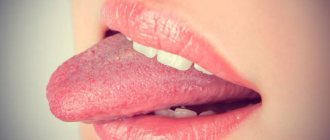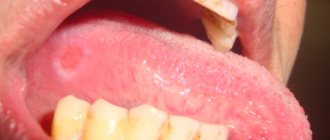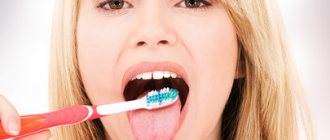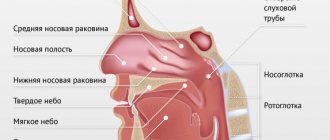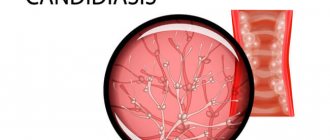The tongue is an indicator of the health of the whole organism. In an adult healthy person, the tongue is pale pink with well-defined papillae. A small amount of whitish coating on the tongue is normal and not a cause for concern.
The coating on the tongue may vary depending on the time of year. In summer, in hot weather, with a lack of fluid and dry mouth, the plaque becomes denser, acquiring a yellowish tint. Soft temporary deposits on the tongue are not a symptom of the disease, do not cause discomfort to the patient, clean well and disappear quickly.
But if the plaque persists, is poorly separated from the mucous membrane of the tongue, and bad breath appears - all these are signs of the development of pathological processes that require consultation with a doctor.
Yellow coating on the tongue: when not to worry
If a strange tint appears on your tongue, do not immediately sound the alarm. The color of the plaque may vary depending on the time of year. For example, in summer in hot weather with a lack of water, the plaque may have a yellowish tint, in winter it can be white-yellow. Do not forget about coloring foods (citruses, apricots, coffee, strong tea), bad habits and medications - they can also cause yellow plaque.
Such plaque can usually be quickly removed with a toothbrush or scraper. If it is impossible to get rid of it with the help of hygiene products, and in addition there is an unpleasant odor from your mouth, then it’s time to see a doctor.
Secondary symptoms
- layer thickness. If the natural color of the tongue is not visible through the plaque, we are dealing with severe processes or chronic diseases. A thin layer, on the contrary, indicates an initial stage or a slight deviation from the norm;
- coverage area (fully or partially);
- consistency. It can be thick, soft, dry or flaky;
- ease of removal. Dense thick plaque is usually difficult to remove. A softer, thinner layer is easier to clean, but can quickly reappear.
Causes of yellow coating on the tongue
- Poor functioning of the gastrointestinal tract.
The most common reason for the appearance of an unpleasant plaque, which can indicate either a mild ailment or a serious illness. As a rule, the issue is resolved by correcting the diet, that is, switching to a more gentle regime and giving up fatty and fried foods.
If the plaque is dense and has an unpleasant odor, then the cause is diseases of the digestive system (pancreatitis, gastritis, ulcers).
- Diseases of the liver, gall bladder, kidneys.
Excessive consumption of fatty and fried foods impairs the flow of bile, which disrupts liver function. Characteristic signs of liver and gallbladder diseases are a yellow coating on the tongue and a metallic taste in the mouth.
- Reaction to antibiotics.
Some medications increase the load on the liver and digestive organs. Since antibiotics kill not only harmful but also beneficial bacteria, to prevent dysbiosis, fermented milk products, prebiotics and probiotics are added to therapy.
- Viral and respiratory diseases.
Yellow plaque can be a consequence of infectious (whooping cough, scarlet fever, etc.) and respiratory (sore throat, pharyngitis, etc.) diseases. During illness, immunity decreases, which is why bacteria settle in the oral cavity, including on the tongue.
What can cause pathological plaque?
The main reason is a malfunction of the internal organs. However, there are two other possibilities: smoking and improper oral hygiene. For active smokers, a yellowish coating is a constant companion, which may not indicate anything bad about health other than the presence of a bad habit. If you don't brush your mouth properly, your tongue will be completely ignored. It is wrong to brush your teeth alone. Bacteria accumulate on the surface of the tongue; they also need to be removed. To clean the tongue, many toothbrush manufacturers make a special brush on the other side. There are also scrapers for the surface of the tongue.
If a person does not smoke and maintains proper hygiene, but there is still plaque, then this may be an indicator of the following diseases:
- Diseases of the digestive system (the most common cause) are ulcers, gastritis, diseases of the gallbladder, pancreas, and liver. Usually in such cases the plaque is accompanied by a persistent unpleasant odor that does not go away even after cleaning.
- Diseases of the respiratory system - tuberculosis, bronchitis, asthma.
- Infectious diseases - influenza, sore throat, ARVI, acute respiratory infections.
- Reduced immunity.
- Diseases of teeth and gums.
- Changes in acid-base balance due to medications.
Yellow coating on the tongue: how to treat
Treatment of pathology should begin with clarification of the diagnosis. To do this, you need to consult a therapist and specialists, take the necessary tests and undergo appropriate diagnostics. Treatment may include not only taking medications, but also a special diet, rinsing with medicinal solutions, careful oral hygiene, etc.
To prevent the formation of a yellow coating on the tongue, experts recommend not to overuse coffee, fried and spicy foods, and to include more vegetables and fruits.
Treatment
To get rid of unsightly deposits, unpleasant odors and other symptoms, you need to determine their cause. To do this, you need to contact a therapist who will conduct an examination and prescribe additional tests and examinations (general analysis and blood biochemistry, throat culture, gastroscopy, ultrasound, coprogram, etc.). Based on the results, he will recommend therapy, diet and, if necessary, give a referral to a gastroenterologist, infectious disease specialist, dentist or other specialist.
After treating the root cause of plaque, its intensity should decrease. But to speed up the process, doctors recommend paying more attention to oral hygiene, brushing the surface of the tongue twice a day with a soft-bristled toothbrush (but not a scraper, so as not to cause injury), drinking more water and rinsing your mouth with herbal decoctions.
Prevention
It is not always possible to prevent the formation of plaque on the tongue, especially if it is a symptom of an infectious, viral or fungal infection. But you can reduce the likelihood. The recommendations will not be new: you need to adhere to a healthy lifestyle, do not smoke, do not abuse alcohol, drink coffee and tea in moderation, exclude too fatty, spicy and fried foods, include more vegetables, fruits, whole grains in your diet, give preference to lean varieties of meat and fish and do not take medications (especially antibiotics) without a doctor's prescription.
Other means
When cleaning your tongue at home, other means can be used. One of the most popular ways is to use vegetable oil. A tablespoon of oil is carefully rubbed throughout the entire oral cavity. After cleansing, the oil should turn white. It must be spat out and your mouth rinsed with warm water.
The duration of the procedure is at least 15-20 minutes. It is more effective if done in the morning before eating.
Another way is to use baking soda. Dilute 2-3 teaspoons in a glass of warm water and rinse your mouth with the resulting solution. A small amount of baking soda can be applied directly to the brush to clean the tongue.
You can buy tongue cleaning gel at the pharmacy. It eliminates pathogenic bacteria, produces a softening effect, moisturizes the soft tissues of the oral cavity and provides fresh breath.
A small amount of gel is applied to the surface of the organ to be cleaned, carefully distributed, left for a few seconds and removed with a brush. The procedure can be recommended for both adults and children. Children under 12 years of age should only brush their tongue with the gel under adult supervision.
If there are injuries and various injuries, blood may bleed while cleaning the tongue. To stop bleeding, you need to press a sterile napkin to the wound surface and hold it for about 10 minutes. Hands should be washed well and disinfected with alcohol. Then rinse your mouth with cold water. Do not cauterize wounds with alcohol or treat them with iodine.
How to remove plaque from tongue at home
There are quite a few ways to clean your tongue from plaque at home: some remedies are recommended by dentists, others are passed down from generation to generation. All of them are effective, so you can clean your tongue in any way you like.
Devices for mechanical tongue cleaning
The tongue can be cleaned of white plaque mechanically using:
- Tongue cleaning spoon
Spoons. Pharmacies sell special spoons for cleaning the tongue; in appearance, they look like spatulas with rounded edges that prevent injury to the organ of taste. These products are made from high quality plastic. Plaque can be removed from the tongue with a regular teaspoon. Preferably silver, as silver has a bactericidal effect. Before use, the spoon should be thoroughly washed with soap and, if possible, treated with an antiseptic. Cleaning should be done with light movements from base to tip until all existing plaque can be removed.
- Scraper. This hygiene accessory is also made of plastic, but has a loop shape. To quickly clean your tongue, you should move the device from its base to its tip.
- Scraper
Toothbrush. Many manufacturers produce toothbrushes with special inserts for cleaning the tongue or removable heads. But you can also use a regular brush, rinsing it thoroughly after brushing your teeth. The cleaning mechanism is similar to that practiced when using a scraper or spoon. To achieve an additional antibacterial effect, you can carry out the procedure using toothpaste.
- Bandage or gauze. You need to wrap a bandage around your index finger, apply a little toothpaste to it and remove the plaque from the organ of taste, making movements from base to tip.
How to deal with plaque using traditional medicine
Traditional medicine offers a lot of ways to remove plaque from the tongue at home:
- Rinse your mouth after brushing your teeth with a tincture or decoction of sage, mint, calendula, oak bark, chamomile or St. John's wort. You can buy a pharmacy tincture and prepare a rinse solution from it: 1–2 tsp. per glass of water. To make an infusion yourself, you need to brew 1 tbsp. l. herbs in a glass of boiling water and leave the decoction for an hour. Herbal mouth rinses will help get rid of white plaque on the tongue and have a healing effect on the gums and throat.
- Rinse your mouth with vegetable oil, preferably olive or flaxseed, for a quarter of an hour. It quickly cleanses the oral cavity of plaque, heals microcracks, and destroys bacteria and fungi. The procedure must be carried out in the morning on an empty stomach, just one tablespoon of oil is enough. It is necessary to put it in your mouth and move it, making chewing movements so that it envelops the entire mucous membrane of the oral cavity. After the procedure, you need to spit out the oil and rinse your mouth well.
- Drink a decoction of flax seeds in the morning on an empty stomach. It’s easy to prepare: you need to brew 1 tbsp in a glass of boiling water. l. seeds and let them brew for an hour.
- Rinse your mouth with an aqueous solution of propolis or chew its pieces. Basically, solid propolis is used when it is not possible to brush your teeth or tongue by other means. It has excellent antibacterial properties.
- Finish each meal with fruit. The acids they contain will cleanse the tongue of bacteria and food particles stuck between the villi and papillae.
You can clear your tongue of plaque by rinsing your mouth with a soda solution. To prepare it, you need to mix 2-3 tsp. soda with a glass of boiled water. White coating can be quickly removed from the tongue by brushing it with a brush sprinkled with a pinch of soda.
How to properly clean your tongue from plaque
In order to properly and effectively clean your tongue from plaque at home, you should follow a few simple but very important rules. Cleaning your tongue from plaque should be done as follows:
- Be sure to brush your teeth and rinse your mouth before the procedure.
- When cleaning, rinse the scraper or spoon with water and wash your tongue.
- Each time after cleaning the organ of taste, it is necessary to rinse your mouth with any pharmaceutical rinse or herbal tincture, and also disinfect the scraper or spoon.
- You need to clean your tongue from white plaque without using toothpaste, but if its use is necessary, you should choose products that contain a minimum of menthol.
- Smokers find it easier to remove plaque with tooth powder or toothpaste.
- The tongue should be cleaned with gentle movements from base to tip, avoiding excessive pressure.
If you experience a gag reflex, do not try to clear your entire tongue the first time. It is enough to start by cleaning its tip, getting used to the unpleasant procedure every day.
Anatomical structure of the tongue
The structure of human language corresponds to its multifunctionality, which lies in the fact that it participates in the processes:
- chewing;
- salivation;
- taste perception;
- speech.
The body of the tongue consists of striated muscle tissue, which is covered by a membrane of mucous tissue. Its surface, called the back, is conventionally divided into three parts:
- the last third, located near the pharynx, is called the root;
- the first two thirds are the body of the tongue.
A longitudinal groove runs in the middle, which is an external manifestation of the internal septum; it is, in fact, a reduced thyroglossal duct.
The mucous membrane, tightly adjacent to the muscle tissue, is covered on the outside with stratified squamous epithelium. It contains:
- salivary glands;
- taste buds;
- lymphatic ducts.
The mucous membrane of the posterior part forms three supraglottic folds, with the help of which the tongue is attached to the larynx:
- median;
- two lateral.
The tongue is abundantly covered with papillae, including:
- filamentous - act as organs of touch and, thanks to the rough surface, hold food on the tongue;
- cone-shaped – responsible for sensitivity to temperature and pain;
- mushroom-shaped - equipped with taste buds, thanks to them we distinguish many taste sensations;
- groove-shaped - located near the root, have serous glands and are also responsible for the sense of taste;
- leaf-shaped - equipped with lingual glands that secrete a mucous secretion.
The tongue is attached to the oral cavity by a fold of mucous membrane called the frenulum.
How to clean your tongue
Do not use regular toothbrushes for cleaning - they will not be able to remove plaque. It is better to pay attention to special tongue cleaning products.
Scrapers
The most common devices are scrapers. The tips of the scrapers are made in the shape of a spoon. They are usually made of plastic, sometimes with stiff bristles. The flat shape prevents the gag reflex that may occur when brushing the root of the tongue. This scraper needs to be changed every six months.
Irrigator attachments
Tongue attachments are also made in the form of a spoon. The irrigator, unlike a conventional scraper, delivers a stream of water, which additionally washes the surface of the tongue.
Attachments for electric brushes
Most brush manufacturers offer special attachments for their products to clean tongue deposits. As a rule, they have a flat, textured rubber surface.
Tongue gels
You should not clean your tongue with toothpaste - it is intended for teeth. Pastes contain abrasives and menthol, they can irritate the mucous membrane. Special gels that gently dissolve plaque and also disinfect the oral cavity are better suited for the tongue.
Determining the disease by the color of plaque
The first diagnostician on the condition of the tongue was the Russian doctor M. A. Nechaev, who in 1833 published the book “Recognition of diseases by changes in the language” in the printing house of Kazan University. Several generations of Russian doctors were grateful to him for this unique work, which helped to carry out diagnostics without additional instruments.
Today, the technique is widely used not only among traditional healers, but also among practitioners of traditional medicine. However, the diagnosis must be confirmed after a comprehensive examination carried out in a laboratory, or using ultrasound, CT, MRI, fluoroscopy, etc.
What do you pay attention to during this diagnosis:
- plaque color;
- its consistency.
As for the color of plaque, it can be:
- white;
- grey;
- yellow;
- greenish;
- bluish;
- brown;
- even black.
And the consistency can be:
- almost transparent;
- flaky;
- viscous.
All signs are compared, and a certain diagnostic verdict is made.
Professional cleaning at the dentist
Even such thorough self-cleaning of the oral cavity is not enough to be sure that you will be free from periodontal disease or caries. From time to time it is necessary to contact a dentist so that he can carry out professional sanitation. Typically it includes:
- preventive examination and assessment of the condition of gums and teeth;
- removal of tartar mechanically or using ultrasonic devices;
- treatment with a special powder mixture to get rid of food pigmentation of teeth, typical for smokers, lovers of strong coffee and tea;
- final flossing to remove tartar fragments from the most difficult to reach places;
- polishing using a special paste to create the most even surface relief of the teeth.
It is recommended to carry out such cleaning every six months, in case of predisposition to caries and periodontal disease - once every 3 months.
How to clean your tongue
If you don't have any health problems that affect the plaque, just follow these guidelines and remember to brush until all the plaque is removed and your tongue is pink again. Typically, tongue hygiene takes only 20–30 seconds.
Recommendations for adults
- Proceed with the procedure only after brushing your teeth
and rinsing your mouth. - Use special tools
: scrapers, nozzles and others. - Clean your tongue using sweeping movements
and light pressure. - Start from the root of the tongue
and end with the tip. - Do not brush your tongue with cross movements and do not press
too hard - this can damage it. - Don't forget to clean the instrument
after the procedure. - Be sure to rinse your mouth
with water.
Should children have their tongues cleaned?
Children also need tongue care, but not earlier than 3–4 years.
For younger children, tongue cleaning is pointless. They don’t eat junk food, especially not in the same quantities as adults, and they don’t drink tea and coffee. Until 3–4 years of age, normal oral care is sufficient. From 3–4 to 8 years
This is how you should clean your tongue.
- Move from the root of the tongue to the tip
with smooth sweeping movements, with even weaker pressure than with adults. - Similarly, clean the sides
of the tongue and the inside of the cheeks. - Be sure to rinse your mouth
.
From the age of 8
you can already use scrapers.
Diagnostics
To establish a complete picture of the state of the body, the doctor determines the color of the tongue, its structure, position, motor functions, and possible other pathologies in the oral cavity. Among the laboratory and instrumental research methods aimed at clarifying the characteristics of plaque and the reasons for its appearance, the following may be prescribed:
- general and biochemical blood test;
- sowing on flora from the surface of the tongue;
- determination of antibodies to the bacterium Helicobacter pylori;
- Ultrasound of internal organs;
- fibrogastroduodenoscopy;
- scatological research.
If you are concerned about the condition of your tongue, plaque on it, pain, unpleasant odor, contact the ENT doctors of our clinic. High-precision equipment and the experience of our specialists allow us to quickly make correct diagnoses and prescribe treatment.
Additional symptoms of bitterness in the mouth
Bitterness in the mouth may be accompanied by additional symptoms. If heaviness or pain is felt in the right side, this may indicate liver or gallbladder disease. If bitterness in the mouth is accompanied by nausea, heartburn, and belching, then the cause may be stomach diseases. If the cause is diseases of the oral cavity, then the feeling of bitterness may be accompanied by bad breath.
Anatomy: what does the tongue consist of?
The tongue is an organ that is part of the digestive system. It performs several functions:
- plays an important role in the formation of speech;
- helps form a bolus of food in the mouth and push it into the esophagus;
- helps us determine the taste of food.
What does language consist of? The organ is conventionally divided into two parts:
- the body of the tongue is the anterior movable part;
- The root of the tongue is the back part located closer to the larynx.
The tongue has a mucous surface on which taste buds are located, thanks to which we distinguish different tastes.
Reasons for appearance
The healthy tongue of a physically healthy person should ideally be soft, soft pink, without cracks, abrasions or pimples. Sometimes there may be a slight grayish or brown coating on it, which is easily removed during hygiene procedures. If there is a thick layer of plaque on the tongue that cannot be removed by normal hygiene procedures, you should pay close attention to this. Most often, plaque on the tongue is formed due to digestive disorders:
- stomach diseases;
- gastritis;
- constipation;
- cholecystitis.
In the presence of these diseases, the patient develops a thick coating of white, gray or yellow color. Sometimes plaque is the first sign of a disease. In this case, the patient is interested in how to clean his tongue, but it turns out that he has serious diseases, without treatment of which it will not be possible to get rid of plaque. Therefore, the correct answer to the question: “I have a coating on my tongue, what should I do?” It would be advisable to consult a doctor and undergo a full examination for the presence of diseases of the gastrointestinal tract.
